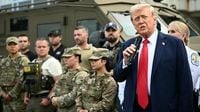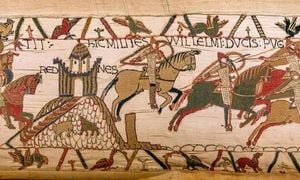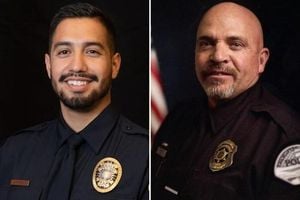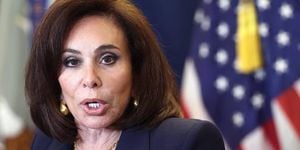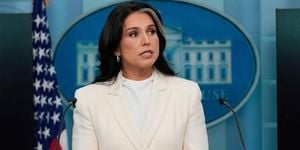On August 21, 2025, President Donald Trump made a highly publicized visit to the U.S. Park Police Anacostia Operations Facility in Southeast Washington, D.C., marking a pivotal moment in his administration’s latest anti-crime initiative for the nation’s capital. The visit, which included Trump personally delivering hamburgers and pizza to assembled officers and National Guard members, was both a gesture of support and a clear signal of the White House’s commitment to the controversial federal crackdown on crime in D.C.
The president arrived at the facility in the presidential limousine—familiarly known as “the Beast”—accompanied by U.S. Attorney General Pam Bondi and White House deputy chief of staff Stephen Miller. The group was met by several hundred uniformed law enforcement and military personnel, all deployed under Trump’s recent public safety emergency order. The president didn’t shy away from making his presence felt. “I just want to thank everybody very much for being here,” Trump said, according to ABC News. “We've had some incredible results that have come out, and it's like a different place. It's like a different city. It's the capital. It's going to be the best in the world.”
This event was the latest chapter in a story that began one week prior, when Trump declared a crime emergency in Washington, D.C. and mobilized the National Guard to support local police. “I'm going to be going out tonight, I think, with the police and, with the military, of course. So we're going to do a job. The National Guard is great. They've done a fantastic job,” Trump told radio host Todd Starnes earlier that day. However, while the president had suggested he would join law enforcement on patrol, he ultimately returned to the White House after his visit to the operations facility, foregoing the ride-along.
Trump’s move to deploy nearly 2,000 unarmed guardsmen from D.C. and six states was framed as a response to what he described as out-of-control crime. Yet, city officials and local residents have challenged that narrative. According to crime statistics from the Metropolitan Police Department, violent crime in Washington, D.C. has actually decreased by 26% since 2024, reaching a 30-year low. Mayor Muriel Bowser was especially vocal in her criticism, telling reporters, “This doesn't make sense. The numbers on the ground and the district don't support 1,000 people from other states coming to Washington, D.C.” She added, “We expect that having 500 additional officers will yield more arrests, and we want guns off the streets. Our police officers continue to do the work, and we expect some incremental difference with more officers.”
The federal operation has not been without tension. The partnership between local and federal law enforcement has grown uneasy, with federal agents not only targeting violent crime but also prioritizing immigration arrests and clearing homeless encampments. The crackdown has included ramped-up stop-and-frisk operations and federal patrols in residential neighborhoods, with reports of people being stopped with little explanation. These tactics have drawn the ire of many D.C. residents and civil rights advocates, who argue that the measures are too heavy-handed and risk undermining trust in law enforcement.
Protests have erupted throughout the city in response to the federal presence. Demonstrators have organized near the White House, and spontaneous confrontations with federal agents have been reported. In one notable incident, a resident was charged with a felony for throwing a sandwich at an officer. The sense of unrest was palpable during Vice President JD Vance and Secretary of Defense Pete Hegseth’s visit to National Guard troops at Union Station on August 20, 2025, where both officials were met with boos and heckling from protesters.
Despite the criticism, Trump has remained steadfast in his message. During his remarks to law enforcement at the operations facility, he declared, “You got to be strong, you got to be tough. You got to do your job. Whatever it takes to do your job.” He further claimed, “It's working unbelievably, much faster than we thought. We've arrested hundreds of criminals, hardline criminals, people that will never be any good.” Trump touted the crackdown as a model for other cities, telling Starnes, “The D.C. deployment was sort of a test,” and suggested that Memphis could be next on the list for similar federal intervention.
The president’s assertion of temporary control over D.C.’s police department—an extraordinary use of presidential power—has sparked debate over the limits of federal authority in local policing. The move follows a precedent set in June, when Trump deployed the California National Guard to Los Angeles amid protests against immigration raids, prompting a lawsuit from Democratic Governor Gavin Newsom. The suit alleges a violation of the Posse Comitatus Act, an 1878 law that restricts the use of the military in domestic law enforcement. That case remains unresolved, but it looms large over the current situation in the capital.
For many residents and city officials, the federal crackdown feels disconnected from the reality on the streets. Bowser and other local leaders point to the declining crime rates and question the necessity—and the motives—behind the surge of outside personnel. “The numbers on the ground and the district don't support 1,000 people from other states coming to Washington, D.C.,” Bowser reiterated. Meanwhile, Trump and his allies have dismissed these statistics, with Vice President Vance arguing that they fail to capture the full scope of crime in the city.
Within the Trump administration, the crackdown has also led to a push for more aggressive prosecution of those arrested during the operation. According to Reuters, federal prosecutors in Washington have been ordered to pursue criminal cases with heightened vigor. This approach has raised concerns among civil liberties advocates, who worry about due process and the potential for overreach.
The troops stationed throughout the city, including at tourist hotspots like the National Mall and Union Station, remain unarmed for now, though officials have indicated that could change. No timeline has been given for when the deployment might end, leaving many in Washington uncertain about how long the federal presence will last.
As the president’s motorcade departed the operations facility and the city absorbed the day’s events, the debate over federal intervention in local policing continued to simmer. For Trump, the day was an opportunity to project strength and tout his administration’s approach to law and order. For his critics, it was a reminder of the enduring tension between federal power and local autonomy—a story that, for now, remains far from resolved.
In the heart of the nation’s capital, the clash between competing visions for public safety has left residents, officials, and law enforcement alike navigating uncertain ground, with the outcome likely to shape the city’s future long after the last guardsman leaves.
